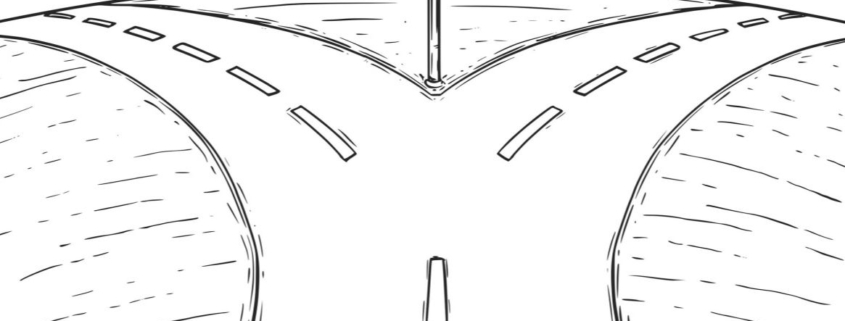You Decide.
When I was young, I loved the Choose Your Own Adventure book series. Each book in the set presented readers with a unique set of pathways that—based on your own choices as a reader—would determine the main character’s actions and the plot’s outcome. It was brilliant, really. If you didn’t like the ending you chose, then you could simply head back to page one and take a different path. You could start all over again. Oh, if only life let us do the same. While there’s no option for going back to page one in life, there are critical decision points that we face nearly every day, with some of them far more complex than others. Our decisions in those moments matter and just like in a Choose Your Own Adventure book, can determine what happens next. You might be choosing between one strategic priority or another, but you might also be choosing between this investment or that one. Maybe you’re choosing between the career you have or the career you want. Perhaps as you’re reading this, you’re choosing between staying on social or saying goodbye, Sometimes the choice is a clear one, but sometimes that fork in the road stumps us and we become consumed with the weight of the decision. I’ve seen this weight show itself significantly more in recent years as executives, leadership teams, and project managers alike have struggled through key decision-making moments. Where we were once confident in our decision-making, we now question ourselves and our choices. But we all know how that story ends: When a leader doesn’t make the decision they need to make, their entire team feels the effect. So, if you’re struggling in these key inflection points, then I’ve got a tool for you. Early on in the pandemic, when nearly everything felt out of our control, our team created a tool to help guide leaders in making better, more informed decisions. It’s a simple impact/risk matrix that may be helpful for you, too. The matrix offers some basic framing for how and when to make a public statement, when to consider a shift in strategy, or when to activate a crisis communications plan. Regardless of the decision at hand, the matrix serves as a critical tool for navigating complicated fork-in-the-road kind of moments. An even more simplified version of the matrix goes like this:
- Start first with the choices in front of you and take a good deep breath. While the choices might not all be good choices, acknowledge that there are in fact choices. Choice, as I’ve learned, is a gift. Take stock in the choice you have in front of you
- Then, start looking more closely at each of your choices through a simple X/Y axis, with high-low impact on one side, and high-low risk on the other. Consider which of your choices has the potential to be high impact: helping you advance your personal or organizational purpose and goals in a way that is meaningful, even if it is complicated or expensive in the near term.
- On the flip side, consider which choices are low impact: they might provide an easy, clear, or safe path forward, but their long-term impact is questionable.
- Then, think on the long- and short-term risks associated with your high and low impact decision points, and plot your decisions accordingly.
- Step back and look at what lives in your high impact/low risk quadrant. Whatever choice sits there may in fact be the path calling you forward.
Bottom line: Life is complicated. This is certain. And the decisions we make on any given day can determine our path forward, so making the most of them really does matter. Use this tool the next time you’re faced with a fork-in-the-road moment and remember: while you can’t go back to page one, you can always progress forward. Something even better might be waiting for you in the next chapter.
This is week 43 of the Finding The Words column, a series published every Wednesday that delivers a dose of communication insights direct to your inbox. If you like what you read, we hope you’ll subscribe to ensure you receive this each week.





 Check out our new
Check out our new